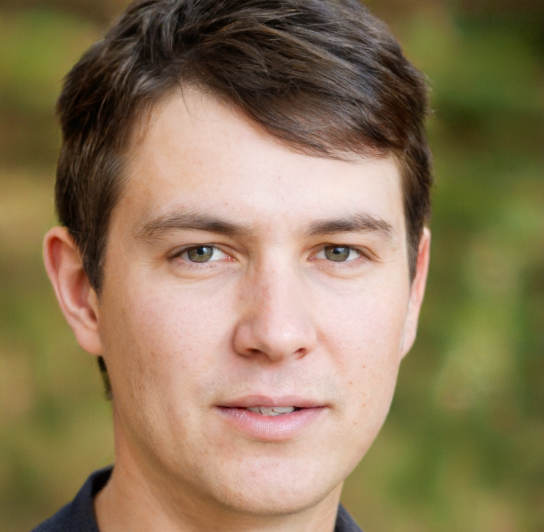Pay Someone to Write My Case Study
Case studies often look simple in theory, but when it’s time to actually write one, the struggle gets real. The research feels endless, the structure never looks right, and deadlines come too fast.
For students and proffessionals alike, it can quickly become overwhelming. That’s why many people start asking – should I just pay someone to write my case study?

Case Study Help
Tailored, research-driven solutions to simplify complex business problems.

24/7 Support
Round-the-clock assistance to guide learners anytime, anywhere.

Learning Resources
Study notes, frameworks, and templates designed for fast understanding.

Affordable Services
High-quality academic help at student-friendly pricing.
Truth is, paying for help isn’t a weakness. It’s a smart way to manage time and energy. Instead of pulling all nighters, stressing over sources and formatting, Accounting you can hand it over to experts who know exactly what to do. You get a polished study that saves you hours of headache and still makes you look good.
Think about it, we pay trainers to guide our workouts, tutors to help with subjects, and mechanics to fix cars. So why not pay a professional to write your case study? It’s about using resources wisely, not struggling alone.
Our team takes every project seriously. We don’t just fill pages, we research deeply, analyse the details and create a case study that flows smooth and professional. Business, law, healthcare, finance, education – no matter the subject, we’ve got experiance that shows in the quality of every single piece delivered.
Imagine the relief of submitting a case study that’s sharp, well written and earns positive feedback. That confidence is priceless, Auditing and it can be yours without all the late night stress.
So if you’ve been thinking I should pay someone to write my case study, don’t wait till the deadline crushes you. Reach out today. It’s quick, affordable and reliable. Click below, get started, and let us do the heavy lifting while you focus on what truly matters.
Case Study Solution
Ever felt like your brain’s doing backflips trying to solve a case study? You’r not alone. Whether it’s business, marketing, Business HR or even legal issues – case studies are designed to test not just what you know, but how you think.

Case Study Help Fast
But here’s the deal – most people overthink it. They freeze. Stare at the problem like it’s speaking another language. Some try to Google answers, others just write whatever sounds smart. Sound familiar?
A proper case study solution isn’t just about answering questions – it’s about telling a story. A solution that walks the reader through the problem, breaks it down piece by piece, and ends with a plan that actually makes sense. That’s where we come in. We’ve helped 100s of students, startups, Economics freelancers and even corporate folks nail their case studies.
We know what evaluators look for. Structure, clarity, insight… but also that little human touch. The kind that says, Hey, this person really gets it.
If your topic is a lil heavy – like a divorce case, employee burnout, workplace discrimination – don’t worry, we treat it with care and empathy. We don’t do cold, robotic writeups.
Case Study Help Fast
Our tone is warm, confident and most important – natural. No AI-sounding buzzwords or generic filler content. We ask the right questions, Ethics do the hard thinking, and deliver case study solutions that you can actualy stand behind.
So whether you’re facing a tight deadline, or just need something that wont raise red flags with your prof or boss – we’re here.
Let’s not waste time. Send us your brief and we’ll handle the rest. Fast, smart and no-nonsense. This isn’t just about getting work done. It’s about getting it done right. Let us help you win.
Harvard Case Study Solution
When people search for Harvard Case Study Solution, mostly they are looking for more then just academic writing. They want a partner who can help them understand, analyse and deliver a complete solution that not only looks good on paper, but also makes sense in real world situations. That’s exactly where our service come’s in.
We know that Harvard Business School (HBS) case studies are famous world wide. They are tough, detailed, and require both critical thinking and practical approach. Many students and proffesionals struggle with them, not because they lack knowledge, but because they don’t have the right framework or time to put everything together. Our job is to make sure you dont feel stuck. Instead of giving you just another generic report, we dig deeper. Every case study solution is tailored around your needs, the professor’s requirements, and the context of the problem. Whether it’s finance, marketing, leadership or operations, our writers focus on creating insights that you can actually use. We believe in solutions that are smart, simple and actionable.
Why choose us? Because we dont treat this like just a paper to submit. We treat it like your success story. Our team bring’s years of experiance in writing and consulting on Harvard case studies. We know the formats, the styles, and the small things that professors notice. At the same time, we avoid over complicating things, so that your paper looks natural and flows easy. If you are wondering about trust, let me tell you, many students feel the same in start. But once they work with us, they realize how much time and stress we save them. Imagine, instead of spending night after night figuring out how to structure your solution, you get a clean, structured and ready-to-submit case study solution in your inbox. That peace of mind is priceless.
Our Harvard case study help is not about shortcuts. It’s about working smart. You still learn from the paper we deliver, because it’s written in a way that is easy to follow. You can pick up the ideas, the framework, and even re-use the approaches in your next assignments or in your career. That’s what makes it different from AI-written robotic content. So if you are looking for Harvard Case Study Solution that is human, practical and focused on getting you results, this is the right place. Don’t wait till the deadline make’s you panic. Reach out today and let us help you shine in your studies. Contact us now and take first step towards stress free case study success.
Comprehensive Harvard Case Study Help: Our Services and Approach
When you hear about Harvard Case Study Help, it’s not just about writing another paper; it’s about getting proper guidance, the kind that makes you feel confident and ready to face tough academic challenges. Our service is build around one simple idea, to make your journey smoother and less stressful.
Harvard Business School case studies are known to be complex. They demand research, analysis, critical thinking, and the right structure. Students often tell us they get stuck halfway, either not sure how to link theory with practice or how to present their ideas in a way that professor’s expect. That’s where our team step’s in. We dont just throw random content on paper. Instead, we take a step by step approach. First, we understand your case and requirements. Then, we look at the problem, the stakeholders involved, and the expected outcomes. After that, we create a framework that makes your case study solution not only well written but also practical and meaningful.
Our writers have years of experiance handling Harvard, HBS, and HBR cases. They know the formats inside out. Whether its about finance, marketing, leadership, technology or operations, we make sure the analysis is deep but still easy to follow. We believe your paper should reflect not just knowledge, but also clarity and simplicity. Another reason students choose us, is because we bring emotional awareness into writing. We know sometimes you’re stressed out, sometimes overwhelmed with deadlines. So our job is not only to write for you, but also to give you peace of mind. Imagine getting a case study solution that you can submit directly, without worrying about structuring, grammar, or missing details. That’s the relief we aim to deliver.
Our approach is transparent. You tell us what you need, we guide you on best strategy, and then we deliver the solution on time. No hidden surprises, no robotic writing. Just human like, easy flowing content that helps you stand out in class. So if you’re searching for Comprehensive Harvard Case Study Help, trust our services to be your partner in success. Don’t wait until the deadline keeps you awake at 3 am. Reach out today, let us handle the heavy lifting, while you focus on learning and moving ahead in your career. Contact us now and take the first step towards stress free case study success.
Personalized Case Study Solution for Academic and Business Students
Every student and proffesional knows, that case studies are not just simple assignments. They test your ability to think, to analyse real situations, and to come up with practical solutions. That’s why many people are now looking for Personalized Case Study Solution that actually matches their unique needs.
Our service is designed with you in mind. We understand that no two case studies are same, and neither are the students or business professionals working on them. Some of you may be struggling with finance cases, others with marketing strategies or leadership challenges. We dont believe in one-size-fits all approach. Instead, we tailor the solution to your goals, your deadlines, and your professor’s expectations.
Think about it. When you submit a generic solution, it looks just like everyone elses. But when you hand in a personalized case study, it stands out. It shows clarity, deep understanding and a touch of originality. That’s what professor’s and managers really value. And that’s what we deliver.
We start by listening. What’s the case about, what are your main struggles, what results do you want to show. Then we move step by step, building a framework that highlights the problems, the analysis, and the recommendations. Our writers bring years of experiance with Harvard, HBS, HBR and other case studies. So you can be sure that the structure, style, and tone is spot on.
Another thing, we know deadlines can be scary. Many students panic last moment, trying to put together something that barely makes sense. Don’t let that happen to you. With our personalized help, you get a clear, easy to understand solution on time. No robotic language, no copy paste, only human-like writing that flows naturally.
For business professionals, our solutions also work as ready-to-present reports. Whether you need to impress investors, partners, or your team, we make sure the case study solution reflects your real world goals. It’s not just about passing an exam, it’s about creating impact.
So, if you are searching for a Personalized Case Study Solution for academic or business needs, you are in the right place. Let us handle the complexity, while you focus on learning and growing. Don’t wait for deadlines to stress you out. Reach out today and make your case study success story start now. Contact us and take the first step towards a worry free solution.
HBS & HBR Case Study Analysis Tailored to Your Subject
When it comes to HBS & HBR Case Study Analysis, students often feel overwhelmed. And rightly so, these case studies are not just ordinary assignments, they are designed to push your critical thinking, your analytical skills, and your ability to link theory with real world practice. That’s why having tailored help can make all the difference.
Our service focuses on providing analysis that is customised to your subject and your unique needs. We know every student has a different background, and every professor has different expectations. Some case studies require deep dive into finance numbers, others into marketing strategies, leadership issues or operations management. We dont deliver cookie cutter solutions, we deliver tailored insights.
Think of it like this, instead of wasting countless hours stuck on a single section, you could have a clear, structured and ready to submit solution prepared for you. Our writers bring experiance from handling hundreds of HBS and HBR cases. They know the formats, the styles, and the right tone to make your paper stand out.
What makes us different is the human touch. We don’t just write robotic reports, we write content that flows naturally and is easy to read. We understand your stress, those sleepless nights before submission, and the fear of missing out on grades. That’s why we make sure your case study solution not only meets academic standards but also gives you peace of mind.
Our process is simple. You share the case details, we analyse the requirements, then prepare a solution that’s clear, insightful and practical. We use frameworks like SWOT, PESTLE, Porter’s 5 Forces and more depending on your subject. And we make sure it is not just theory on paper, but something you can actually learn from and apply in future.
For business professionals too, our case study analysis can be a life saver. If you need to prepare for a meeting, presentation or strategy session, we deliver analysis that you can present with confidence. It’s about saving you time, effort, and giving you that professional edge.
So, if you are looking for HBS & HBR Case Study Analysis tailored exactly to your subject, dont wait till the last moment. Reach out now, let us handle the heavy lifting while you focus on learning and achieving success.
Contact us today and take first step towards worry free case study solutions.
End‑to‑End Support: Writing, Editing, and Citations
When it comes to Harvard case studies, many students feel lost. It’s not just about writing, it’s about editing, formatting,and getting the citations right too. That’s why our service offersend-to-end support, so you don’t have to stress over any piece of the puzzle. We start with writing. Our experts dig into the case, analyse the data, apply frameworks like SWOT or PESTLE, and craft a structured solution. You don’t just recieve a generic essay, you get a detailed analysisthat connects theory with practical insights.
Next is editing. Writing alone is not enough.Every draft goes through checks for clarity, flow, grammar and academic tone. We smooth out sentences, fix errorsand polish the work until it shines. Because a strong idea needs strong presentation too. Then comes citations. Missing or wrong references can cost you marks, even if the content is good. We make sure your citations are accurate, whether its APA, MLA, Harvard, or Chicago style. You don’t have to worry about formatting rules, we handle it all for you.
This end-to-end approach saves you time, reduces stress, and gives you peace of mind. Instead of jumping between different services for writing, editing and references, you get everything in one place. So, if deadlines are near and pressure is building, don’t waste hours fixing little details. Get full support – from writing to editing to citations – and walk into class confident with your case study solution.

About Our Company
CaseStudyHelper provides clear, research-driven case study solutions and learning resources for students, educators, and professionals.
Our mission is to make complex business concepts simple, practical, and applicable to real-world challenges.
Vision Missions Goals
We Provide High Quality Services & Innovative
Solutions For The Realiable Growth
Expert Team of MBAs and CFAs Ensuring Academic Excellence
When you are dealing with academic projects or Harvard case studies, the people behind the solution matter more than anything else. That’s why our service is built around an expert team of MBAs and CFAs, who bring not just
book knowledge, but also years of practicle experience. And trust me, that mix is exactly what leads to real academic excellence.
So why MBAs and CFAs? MBA’s are trained to think broad, create strategies, solve complex business problems and understand leadership dynamics. CFAs, on the other hand, are masters in finance, accounting, investments, and valuation. Together, they make sure no matter what subject your case study touches, we’ve got the right expertise ready for you.
We know how stressful it can feel, sitting late night with piles of notes, deadlines chasing you, and still not sure if your paper is good enough. That’s normal. And that’s why having professionals on your side makes such a huge difference. When an MBA or CFA handles your case, you get peace of mind along with a well-structured, human sounding solution.
Our process is simple, yet powerful. We start by listening to your needs. What’s the topic, what are your professor’s expectations, what outcome do you want. Then we build a framework, identify the problem’s, analyse data, and provide recommendations that are not just academic but also practical. No robotic tone, no generic writing, only natural flowing content that looks and feels authentic.
Students often loose marks over small mistakes in grammar, structure, or citations. We make sure that doesn’t happen. APA, MLA, Harvard, Chicago, we handle all citation styles with care. At the same time, we keep the writing easy to follow so you can actually learn from it instead of just submitting blindly.
At the end of the day, it’s not just about grades. It’s about confidence, saving your time, reducing stress, and gaining knowledge you can carry forward. Our MBAs and CFAs ensure that every case study solution delivers all of that.
So if you want academic excellence backed by real expertise, this is your chance. Don’t wait until the deadline has you panicking. Reach out today and let our expert team of MBAs and CFAs help you achieve success with confidence.
Why Choose Our Harvard Case Study Solution Service?
Anyone who has faced a Harvard case study knows, it’s not a simple assignment. It’s hours of reading, analysing numbers, making sense of theories and then putting it all together in a clear and structured solution. Many students start with good intentions but soon find themself stuck, unsure how to move forward. That’s exactly why our Harvard Case StudySolution service was created, to help you manage the stress and deliver quality.
So, why choose us? First of all, we dont just throw random content on paper. We make every case study solution personalized. Your subject, your professor’s requirements, and your own goals are at the center of our work. Be it finance, marketing, operations or leadership, we know how to design an analysis that truly fits your need’s.
Our approach is simple but effective. We start by listening carefully. What’s the case about, what parts you are struggling with, what’s the outcome you want. Then we build a framework, identify the problems, analyse the details, and provide recommendation’s that make practical and academic sense. So your final paper doesn’t just look polished, it tells a real story.
Deadlines are another big challenge. We know the late nights, the endless coffee’s, and the panic of last-minute submissions. With us, you can avoid all that. We deliver solutions on time, ready to submit, so you dont need to stress out. Our writing is clear, flowing naturally, no robotic tone, no stiff wording, just human-like expression that gets results.
What also sets us apart is experiance. Our writers and editors have years of working on Harvard, HBS and HBR cases. Some even bring real world consulting background, so they know how business problems are handled outside classrooms too. That gives your solution extra depth and practical value.
At the end of the day, our service is not only about helping you pass. It’s about saving your time, lowering your stress and giving you confidence. You get to learn from the paper, understand the frameworks, and even use them again in future assignments or in your career.
So if you are wondering why to choose our Harvard Case Study Solution service, the answer is simple. Because we care about your success, and we back it up with quality, dedication and results. Dont wait till the deadline gets too close. Contact us today, and let’s make your case study journey stress free and successful.
Affordable Pricing and On‑Time Delivery for Students Worldwide
Let’s face it, being a student is not easy. Between lectures, exams, part time jobs and personal life, the last thing you want is to spend a fortune on academic help. We understand that, and that’s why our service is designed around affordable pricing and on time delivery, no matter where in the world you are.
We know most students live on tight budgets. That’s why our prices are kept student friendly, so you can get top quality work without draining your wallet. And unlike some others, we keep things transparent. No hidden fee’s, no shocking last minute add-ons. Just simple, clear pricing that you can trust.
But price alone isn’t enough, right. What good is affordable help if it arrives late. Deadlines are stressful, and missing them can cost you grades, reputation, or worse. That’s why on time delivery is a promise we take very serious. Our team works day and night, across different time zones, to make sure your paper lands in your inbox exactly when you need it.
Imagine the relief, getting your case study or essay ready to submit, without staying up all night or gulping down endless coffee. You save time, energy, and gain confidence knowing you’re fully prepared.
We also know sometimes cheap services equal poor quality. Not here. Our writers, including MBAs, CFAs, and experienced researchers, ensure every solution is detailed, practical and written in a natural, human like tone. So while the pricing is light on your pocket, the value you recieve is top notch.
At the end of the day, we’re here to make students life easier. Affordable pricing and on time delivery are not just marketing words, they are commitments. We stand by them, because we know exactly what it feels like to be under academic pressure.
So, if you need reliable, budget friendly academic support, you’re in the right place. Dont wait until the deadline is breathing down your neck. Reach out today, and let us deliver high quality work, on time, at a price you can actually afford.
Confidentiality and Plagiarism‑Free Guarantee
When you hand over your personal project, your story, or your assignment—you’re putting your trust on the line. We get that. And we don’t take that lightly, not even for a second.
Confidentiality isn’t just a fancy word in our policy page. It’s the way we work. From the moment you reach out to us, your details, files, and conversations are kept under wraps. We don’t gossip, don’t share, and sure as heck don’t sell your info. Your privacy is yours, and we’re here to protect it like it’s gold. And now, let’s talk plagiarism. You’ve probably seen it before—generic, cookie-cutter stuff that looks like it’s been re-used a 100 times.
That’s not what you’re paying for, right? We write everything fresh, from scratch, tailored to your needs. Before anything gets to you, it’s passed through plagiarism checks and a human eye too. We’re not just saying it’s original—we’re proving it. Maybe you’re dealing with a divorce case, or maybe it’s a career-changing thesis. Whatever it is, we treat it with care.
We know some things are too personal to gamble with. That’s why our team is trained to handle even the most sensitive topics with empathy and full respect. Look, we know people been burned before. Maybe by shady sites or careless freelancers. It sucks. But we’re here to do things different. And better. So if you’re still on the fence—don’t be. Give us a try. Let us show you what real, respectful, plagiarism-free, confidential service looks like. Hit us up today. We’ll handle the rest.
Range of Business and Academic Subjects Covered
One of the biggest worries students have is, will my subject be covered? Education today is not limited to one area, it’s a mix of business, finance, law, management, marketing, IT, healthcare and so much more. Assignments and case studies come from every direction, and it’s normal to feel lost when you dont have the right support. That’s why professional case study and academic help services cover a wide range of subjects – so you’re never stuck alone. Take business for example: Whether it’s management, finance, accounting or operations, each subject needs structured analysis and clear solutions. Marketing assignments ask for creativity and strategy, while finance demands accuracy and numbers that match. Trying to balance both without expert guidance can drain hours of your time.
Then comes academic fields outside business. Law students deal with complex cases and legal frameworks, where every detail matters. Healthcare students face research and ethical questions that are sensitive and demanding. Even IT and computer science projects require coding, logic, and presentation – skills that not every student feels confident in. Having support across these areas means you can focus on learning rather than just struggling. The variety of subjects covered is not just about finishing tasks, it’s about giving you peace of mind. When you know that experts can handle topics from business strategy to literature review, from statistics to marketing plans, you don’t panic when a tough assignment shows up. Instead, you save time and use your energy where it really counts – your core studies.
This broad subject coverage also ensures quality. Each paper is handled by someone who knows the field, not just a general writer. That’s why the reports look professional, properly structured and professor ready. And let’s be honest, good grades don’t come from guesswork, they come from well prepared work. So if you’ve been wondering whether your subject can be handled, the answer is yes. From business to law, from IT to healthcare, professional help services cover the full range. Don’t wait until deadlines become nightmares. Reach out, save time, and make sure you get the grades you deserve.
Harvard Business School, Harvard Business Review and Ivy League cases are known worldwide for being tough, detailed and highly practical. Students often say these cases are not just assignments, they’re like real life business problems that need sharp thinking and smart solutions. But let’s be real, not everyone has the time or the skill to handle them perfectly. That’s where specialized support makes a huge difference.
HBS cases demand structured analysis. You’re expected to apply models, weigh alternatives, and then choose the best strategy. It’s not about copying theory, it’s about connecting ideas to the problem infront of you. Without proper structure, a case study can quickly look messy and lose marks. Specialized support ensures your report follows a clear flow – introduction, analysis, recommendations and conclusion. Exactly what professors want to see.
HBR cases are more research based, often filled with real data, market reports and strategic insights. The challenge is not just to read them, but to interpret and present solutions that stand strong. Professional guidance helps in breaking down complex material and turning it into clear, professor ready content. This saves time and boosts grades. Ivey League cases, whether from Wharton, Yale, or Columbia, push students to think critically and globally. They mix finance, management, leadership and operations all in one. Without expert help, it’s easy to feel lost. Specialized support gives you clarity and confidence, so you don’t just submit a paper, you deliver work that looks polished and convincing.
The real value of specialized case support is peace of mind. You don’t have to worry about missing key details, wrong analysis, or poor structure. Instead, you focus on your learning, while experts handle the heavy lifting. That balance means better grades, less stress, and more time for your core studies. So if you’re stuck with a Harvard or Ivy League case, don’t wait till the deadline panic hits. Reach out for specialized support, get structured solutions, and give yourself the best chance to shine infront of your professors. It’s not just help, it’s a smart investment in your academic and career success.
Students today face a mountain of subjects. It’s not just about reading books, it’s about case studies, research, presentations and practical application. And when it comes to areas like management, marketing, finance and operations,
things can get tough real quick. Each field has its own language, its own methods, and sometimes you just need expert guidance to stay on track.
Management is all about planning, leading and making decisions. Assignments here often ask you to evaluate strategies, handle team issues or solve leadership problems. It’s not enough to write theory, you need real world examples and structured solutions. Without proper help, management papers can feel confusing and incomplete. Marketing is another big one. It’s creative but also demanding. From building strategies to analysing consumer behavior, marketing assignments require both ideas and data. Students often struggle to balance creativity with numbers, and that’s where professional support makes the difference.
Finance, let’s be honest, is where most students panic. Numbers, ratios, investment models – it can feel like a foreign language. A single mistake in calculation can mess up the whole report. Expert support ensures your work is accurate, clear and professor ready. This doesn’t just improve grades, it builds confidence. Operations covers everything from supply chain to efficiency. Here, you might be asked to analyse bottlenecks, design processes or recommend improvements. Operations needs logic, structure and clarity. Without the right approach, it’s easy to lose marks even if you worked hard.
And it doesn’t stop there. Business is wide. From HR to accounting, from data analytics to international strategy, students are tested on many fronts. Having support across all these subjects means you save time, reduce stress, and focus on learning the core skills that matter for your career. So if you feel stuck in management, lost in marketing, nervous about finance or struggling with operations, don’t wait. Professional case study and academic help covers all these areas and more. Reach out today, save time, and give yourself the best chance to score higher and build a brighter future.
Case studies are at the heart of business education. Whether you’re studying in an MBA, an EMBA or even in an undergraduate program, your professors use them to see how well you can think, analyse, and solve real world problems. But let’s be honest, not every student has the time, energy or even confidence to pull off a detailed case study on their own. This is exactly where customized case study analysis becomes a game changer.
For MBA students, the focus is usually on strategy, leadership and practical solutions. A single case might combine finance, marketing, operations and HR, all together. You’re expected to connect theories to practice and suggest recommendations that sound real not just good on paper. With tailored help, you can present structured, professional work that not only scores better but also shows clarity in thought.
EMBA students face even bigger challanges. Most are already working full time, balancing family, deadlines and heavy workloads. Doing complex analysis after a long office day is no joke. Customized support here means you can save time, reduce stress, and still deliver high quality assignments. It’s like having a partner that helps you stay ahead without burning out. Undergraduate students are still learning the ropes. Many are new to frameworks like SWOT, PESTLE or Porter’s Five Forces. A customized solution works like a guide, showing you step by step how to structure your ideas, write clearly and actually understand the process instead of just guessing. This builds confidence and naturally improves grades.
The best part of customized analysis is that it adapts to you. Every program, every case and every student is unique. Instead of generic templates, you get support designed to match your specific needs. That means your work doesn’t just look good, it feels personal and professor ready. So whether you’re pushing for top marks in MBA, juggling career and study in EMBA, or building foundations as an undergrad, customized case study analysis gives you the edge. Don’t wait until stress piles up. Reach out today, save your time, boost your confidence and give yourself the best chance to succeed.

Case Study Help
Case studies are tricky. They look simple on the surface, but once you dive in, the research feels scattered, Finance the structure gets confusing, and deadlines start breathing down your neck. Many students and even working proffesionals hit this wall sooner or later.
Done-For-You Case Study
That’s where case study help comes in. Instead of pulling endless late nights, you can get expert guidance that makes the whole process smoother. From proper research, Harvard to writing, to polishing the final draft – support is right here. It’s not about shortcuts, it’s about saving time and energy while still getting quality work.
A lot of people think asking for help means they can’t handle things. But really, it’s a smart move. Think about it; you call a mechanic when your car breaks, you see a doctor when you’re sick. Getting help with a case study is the same logic. Why struggle alone when there’s help available?
Trusted Case Study Aid
Our team doesn’t just fill pages with words. We analyse deeply, gather the right data, and write in a way that’s clear, professional and engaging. Business, law, finance, Human Resource healthcare or education – we’ve done it all, and that experiance shows in every project we deliver.
Imagine turning in a case study that looks polished, reads smooth, and gets the appreciation you wanted. That confidence is priceless. And it’s exactly what we offer. So if you’re staring at a blank screen or feeling the deadline pressure, don’t wait till last minute. Reach out for case study help today. It’s fast, Ivey affordable and reliable. Click below and let us make your work easier while you focus on what really matters.
Our Commitment to Credibility and Quality
When you’re trusting someone with your academic work, credibility and quality are not just fancy words, they are everything. Students already deal with enough stress – exams, deadlines, family, jobs – the last thing you needis to worry about whether the work you recieve is reliable or not. That’s why our first promise is simple: we never compromise on credibility. Credibility means honesty. No shortcuts, no copy paste, no recycled reports. Every case study is crafted fresh, with proper research, analysis and structure. We understand how dangerous plagiarism can be, one mistake can damage grades and even future opportunities. That’s why we make sure our work is 100 percent original and trustworthy.
Quality is equally important. A report that looks rushed or filled with errors doesn’t just lose marks, it also makes you look careless infront of professors. We focus on clarity, flow and accuracy. From the introduction to the conclusion, every section is polished to make sure it’s professor ready. When your work looks professional, you don’t just score better, you also feel more confident. But quality isn’t only about words on paper. It’s about understanding what students really need. Sometimes it’s saving time, sometimes it’s reducing stress, and sometimes it’s just having peace of mind that someone has your back. We treat every project with care, knowing that behind each assignment is a student with dreams, pressures and goals.
Our commitment to credibility and quality is not just a promise, it’s the foundation of how we work. Because at the end of the day, you’re not just buying a service, you’re investing in your education and future. And we take that responsibility very serious. So, if you want support that is honest, reliable and high quality, reach out today. Let us help you achieve better grades with work that you can trust. After all, credibility builds trust, and quality delivers success.
Behind every strong case study solution or research paper, there’s always a dedicated team that makes it happen. We don’t rely on random freelancers who may disappear last minute. Instead, we have our own in‑house team of experienced writers and researchers who work side by side to make sure every project is credible, high quality, and professor ready.
Why does this matter for students? Simple: An in‑house team means reliability. You’re not left guessing if the writer knows your subject or not. Our team covers management, marketing, finance, operations, law, IT and much more. Each expert is selected for their background and trained to meet academic standards. That means when you ask for a case study in finance or a marketing report, you get someone who actually understands the field.
Having in‑house researchers also ensures depth. They dig into real data, journals and case material instead of just googling the first thing they find. This is what makes the analysis sharp, the arguments convincing, and the work stand out. It also creates accountability. Our team works together, reviews each other’s work, and makes sure quality checks are done before anything is delivered. No last minute panic, no sloppy reports. Just work that reflects effort and care.
Most importantly, an in‑house team means consistency. Your writing style, structure and tone stay professional across all assignments. Professors notice when work feels connected, and this helps build your academic reputation. So when you choose us, you’re not just hiring a service, you’re gaining access to a full team of professionals committed to your success. Don’t risk your grades with uncertain freelancers. Go with a trusted in‑house team that knows how to deliver credible, quality work every time.
When it comes to academic work, credibility and quality are everything. No student wants to spend money or trust their grades on something that looks rushed, weak or filled with errors. That’s why we built a system of multiple quality checks and peer review, to make sure every single report we deliver meets the highest standards.
Our process starts with the writer. Once the first draft is done, it doesn’t go straight to you. Instead, it is reviewed internally by another team member who checks structure, flow and analysis. This peer review step helps catch mistakes, improve arguments and polish the overall tone. Two heads, as they say, are better then one.
After that, the work goes through quality checks. Grammar, spelling, formatting, references – nothing is left behind. We know professors notice even small details, so we make sure the report looks professional from start to finish. These checks save you from losing marks over simple things.
But quality control isn’t just about fixing errors. It’s about making the work shine. Our team focuses on clarity, consistency, and making sure the report answers the case study question directly. At the end, the paper doesn’t just look correct, it looks convincing. This layered process also gives peace of mind.
Students know their assignment has been seen, tested and approved by more than one expert. That means no surprises, no stress, just reliable work you can trust. So if you want academic support that goes beyond just writing, choose a service with multiple checks and real peer review. Because credibility comes from effort, and effort shows in every grade you earn.
When it comes to trusting an academic service, nothing speaks louder than the voices of clients who have already used it. Testimonials and success stories are not just nice words, they are proof that real students, facing real pressure, found real results.
One MBA student shared how she was struggling with a Harvard case study. She said nights were sleepless, the frameworks felt impossible, and stress was eating her alive. With our support, she recieved a structured solution, clear analysis and recommendations that her professor loved. The result? She not only scored high but also felt confident presenting in class. That’s the power of a success story.
Another client, an EMBA professional, explained how he had no time balancing work, family and studies. Deadlines were closing in fast. With our customized help, he managedto submit on time without compromising his job or personal commitments. For him, it wasn’t just about grades, it was about peace of mind.
Undergraduate students too have shared positive feedback. One mentioned how our guidance showed her the right way to use SWOT and PESTLE, frameworks that once felt confusing. Now she says she feels more confident tackling assignments on her own. Stories like these prove that support is not just about one paper, it’s about long term growth.
Testimonials also build trust. They show that what we promise – credibility, quality, and commitment – actually delivers. Students know they’re not alone. Others have walked the same road, faced the same doubts, and found real results with us.
So if you’re still hesitating, listen to the voices of those who already made the choice. Their stories show what’s possible when you get the right support. Join the list of success stories today, save your time, and secure the grades you deserve.
OUR SERVICES

Accounting
Accounting services that deliver accuracy, transparency, and reliability for your business success.

Auditing
Auditing services that ensure compliance, accuracy, and trust through independent financial review.

Business
Business services that empower growth, innovation, and long-term success with strategic solutions.

Economics
Economics services that provide insights, analysis, and strategies for informed decision-making and sustainable growth.

Ethics
Ethics services that uphold integrity, fairness, and responsibility as the foundation for every decision.

Finance
Finance services that drive smart investments, stability, and sustainable wealth management.

Harvard
Harvard — a global leader in education, research, and innovation, shaping future leaders worldwide.

Human Resource
Human Resource services that foster talent, growth, and a positive workplace culture for organizational success.

Ivey
Ivey — a world-class business school recognized for leadership, case-based learning, and global impact.

Management
Management services that optimize performance, strategy, and innovation for sustainable organizational success.

Marketing
Marketing services that build brand value, engage customers, and drive business growth with creativity and strategy.

Operations Management
Operations Management services that streamline processes, enhance efficiency, and drive sustainable performance.

Supply Chain Management
Supply Chain Management services that ensure efficiency, resilience, and seamless end-to-end business operations.

Taxation
Taxation services that provide compliance, efficiency, and strategic planning to optimize financial outcomes.
Proven Process for Harvard Case Study Analysis
If you’ve ever stared at a Harvard case study and thought, Where do I even begin?, you’re definetly not alone. These cases aren’t just long—they’re layered, tricky, and often meant to make you think beyond the obvious. But don’t worry, there’s a process. A solid one. And we’re here to walk you through it.
First things first: read the case. Not skim. Read. Absorb it like you’re part of the company itself. Understand the key players, the problem, the timing, the market condition’s. Make some rough notes. Highlight what feels important, even if it dont make full sense right away. Next, define the core problem. And no, it’s not always what it seems on the surface. Dig deep. Ask yourself: What’s really going wrong here? Is it leadership? Is it strategy? Or is it just poor execution? This is the moment where having a trained eye helps.
Once you’ve nailed the problem, start breaking it down. We’re talking SWOT analysis, Porter’s 5 Forces, financial ratios (if provided), and internal vs external factors. Lay it all out. This stage is messy, but thats ok. It’s suppose to be. Now comes the strategic options. You wanna think like a decision maker. Offer more than one solution, but don’t overdo it. And please, be realistic. Harvard professors aren’t looking for fairy tales, they want grounded, practical suggestions.
Finally, you wrap it up with a recommendation and a clear implementation plan. What should be done, by who, when, and how. Simple. Actionable. Done. Our team has done hundreds of these, so we know the process inside out. And if you’re stuck, overwhelmed, or just short on time, let us help. We don’t just write the case study for you—we help you understand it, own it, and submit it with confidence. So go ahead. Reach out. Let’s crack your next Harvard case together.
Thorough Research and Critical Reading of the Case
Doing a case study is never just about reading a story and giving quick answers. It’s about looking under the surface, seeing what others missed, and connecting the dots in a way that makes sense. Many students and even professionals fall into the trap of skimming the material. They think they got the point, but really they only saw half the picture. And that half baked work rarely convinces anyone.
Thorough research is the first step. It’s not only about googling a fact or two. Real research means exploring background info, analysing industry or legal context, and even understanding emotions involved. Take an example, in a divorce case, you can’t simply stop at laws and procedures. You need to see the emotional strain, the financial issues, and the family dynamics. Without this deeper lens, your solution will sound robotic and disconnected. Same goes in business cases.
Critical reading is where you stop being a passive reader. Instead of just nodding along, you ask tough questions. Why did this event happen, what could be hidden, who really gains here, and what if a small detail changed. Reading critically is like being a detective; you’re not just reading lines, you are looking through them. That’s how your case study solution becomes more then average, it becomes impactful and trusted.
Here’s what matters most. Strong research and critical reading build credibility. Teachers reward it with higher grades. Clients respect it because they see you as reliable. Employers notice it when they look for leadership and smart judgement. That credibility is what sells you in the real world. It’s not fancy words, its the depth you bring to the table.
And this is exactly what we provide. Our service helps you go beyond surface reading. We dont just throw generic solutions, we guide you step by step to research smarter, read sharper, and present a case solution that is unique, plagiarism free, and tailored. That way you not only complete your case, but also impress the evaluator.
Don’t let weak research or careless reading stop you from success. Reach out today, and see how we can transform your approach. The fine line between average and excellent is smaller then you think, and it starts with being thorough and critical in every case.
Structured Analysis Using SWOT, Porter’s Five Forces & PESTLE
Running a business today feels like walking through a maze, with every turn full of surprises. That’s why structured analysis is not a luxury, its a need. Tools like SWOT, Porters Five Forces and PESTLE help you see the road clear, so you’re not stuck guessing in the dark.
SWOT is the most popular one, yet often misused. Strengths and Weakness are about looking inside, while Opportunities and Threats make you look outside. When done right, it helps you discover advantages you didn’t realise you had and weak spots that need fixing. Its not just a report, it’s a mirror that shows where you truly stand.
Porters Five Forces on the other hand, is about the fight in the market. Your rivals, the power of suppliers, the bargaining of customers, the threat of new comers and substitutes – all of them pull at your profits. Ignore them and your strategy will crack. But if you map them out, you can predict where pressure comes from and act smarter.
PESTLE zooms even wider. Politics, economy, social culture, technology, law and environment. One sudden shift in any of these, and your business model might shake. Remember how fast new regulations or tech breakthroughs change the game? This tool makes sure you are ready instead of caught off guard.
The real magic is when you combine them. First, PESTLE gives you the big horizon, then Porters shows the industry fight, and SWOT brings it personal to your company. Layering them is like starting from the sky view, then moving closer, and finally standing right at your doorstep. Only then you see the full picture.
And lets face it, in business, time wasted on wrong choices cost money. Clients, investors and your team want clarity not confusion. Structured analysis give’s you that clarity. It turns complex problems into clear steps, saving you stress and helping you win.
If you feel lost on where to begin, thats where we come in. We don’t just explain these frameworks, we apply them to your unique situation. From step by step SWOT sessions, to detailed Porters review, and wide PESTLE scanning – we deliver strategies that are simple, actionable and focused on results.
Don’t let uncertainty decide for you. Contact us today, and lets put structure into your business strategy, so you move ahead with confidence and peace of mind.
Developing Alternative Solutions and Selecting the Best Strategy
In business and in life, problems don’t come with ready instructions. They show up unexpected, and too often people rush to the first solution that comes to mind. It feels easy in the moment, but that quick fix rarely holds. It’s like trying to fix a leaking pipe with tape, sooner or later it bursts again. That’s why developing alternative solutions is not just smart, its necessary.
Every challenge has more then one way out. Sticking to one path limits your vision, while exploring alternatives creates space and confidence. In consulting, in legal cases like divorce, or in business strategy, clients want to feel they have choices. Options give them hope, and hope is what turns into trust. Trust is what sells.
Still, having too many choices can confuse. Ever opened a menu with 100 dishes and still ordered the same old food? That’s what happens when options overwhelm. The real skill is not only in creating alternatives, but also in choosing the one that works best. And best here doesn’t mean perfect. It means realistic, affordable, and aligned with the bigger goal.
Let’s say a company is loosing sales. They might lower prices, launch new products, or invest in digital ads. All sound good, but trying all at once will drain resources. The smart move is to weigh cost, risk, and potential reward. The winning strategy is the one where the opportunity clearly outweighs the downside.
Clients feel safer when you guide them this way. They see you’re not forcing a quick sale, but instead showing that you explored all angles before suggesting the right move. That builds credibility, and credibility is the bridge to closing deals. In fields like finance, consulting or legal services, developing alternatives is not just problem solving, it’s actually a sales tool.
So next time you face a critical decision, don’t run after the first shiny fix. Pause, brainstorm, sketch alternatives, then choose with clarity. Perfection may not be possible, but smart execution always is. And once you deliver the right strategy, you’re not only solving today’s issue, you’re also building long term growth and reputation. That’s the real win.
Writing the Case Study Report: Structure, Recommendations & Conclusion
Writing a case study report is not just about putting words on paper. It’s about crafting a story that pulls the reader in, guides them step by step, and then convinces them why your solution is the best fit. A good report is both logical and emotional, because decision makers are humans first, they need facts but also want to feel secure in the choice.
Start with the structure. Without a proper structure, a report is like a house with no walls, it simply wont hold up. Begin with an introduction and background. Set the scene clearly, explain the issue, and give the facts that matter. This section is your stage setting, without it nothing else will connect.
Then move into the analysis. Here you roll up your sleeves and dig into the details. Use frameworks like SWOT or PESTLE, but don’t overdo it. Too many charts and models make the reader yawn. Instead, connect each point back to the core problem. Show how external factors or internal weaknesses are shaping the issue. This is where readers begin to see the bigger picture.
After that comes the recommendations, the heart of your report. Don’t just highlight problems, offer practical ways forward. If sales are falling, maybe it’s time for a new product line or a stronger digital strategy. If costs are too high,
suggest leaner processes or outsourcing. Keep it realistic, achievable, and directly tied to the analysis. A recommendation that can’t be implemented is just empty words.
Finally, close with the conclusion. This is not a place to repeat everything, it’s where you tie it all together and leave the reader with confidence. Think of it like a lawyer’s final argument in court; short, strong, and memorable. Remind them of the problem, show why your recommendation is the best path, and finish with clarity.
For businesses and consultants, a well written case study report is not just academic work, it’s a selling tool. It builds trust, shows professionalism, and convinces clients that you are the right partner for the job. Many times, the report itself is what makes a client return for more projects in future.
So remember, when writing your next case study report, focus on structure, clear analysis, strong recommendations and a sharp conclusion. Done right, your report will not only solve the problem but also sell your expertise. And that’s exactly how good reports turn into real opportunities.
Hire Someone to Write My Case Study
Case studies can be a real headache. You think it’s just about writing, but once you start, the research piles up, Management structure gets confusing and deadlines keep getting closer. For many students and proffessionals, this is the point where they think – I should just hire someone to write my case study.

Smart Case Study Writing
And you know what, that’s actually a smart move. Hiring help doesn’t mean you’re lazy, Marketing it means you understand how to use time wisely. Instead of wasting endless nights stressing, you get experts who know exactly how to put everything together in a way that works. Clean, professional, and done on time.
Think of it this way; we all hire trainers for gym, tutors for studies, mechanics for cars. So why not hire a writer when case studies are weighing you down? It’s just common sense to get help where you need it most.
Case Study Support You Need
Our writers don’t just throw information onto paper. They dig deep, analyse carefully, Operations Management and build a case study that flows smooth and looks polished. Whether it’s business, law, healthcare, finance or education, we’ve got experiance to handle it. And yes, that experiance shows in the work you recieve.
Now picture the relief you’ll feel walking into class or office with a case study that’s sharp, impressive and gets good feedback. No panic, no last minute rush, just confidence.
So, if you’re saying to yourself right now I want to hire someone to write my case study, don’t wait till the deadline eats you alive. Reach out today. It’s quick, affordable and absolutely reliable. Click below, get started and let us take the pressure off your shoulders.
Benefits of a Professional Case Study Solution for Students
Being a student today is not easy at all. Between exams, assignments, part time jobs and sometimes even family matters, life can feel like a never ending race. Out of all the tasks, case studies are often the toughest. They ask for research, deep analysis, structured writing and clear recomendations. And honestly, not everyone has the time or energy to do it all perfect. This is where a professional case study solution can make a huge difference.
The first big benefit is saving time. Students are always short on time, running from one deadline to the next. Having expert help means you don’t have to spend hours staring at a blank screen, panicking. Instead, you can focus on other priorities like revising exams, preparing projects, or simply resting. And let’s not forget, rest is not waste of time, it’s what keeps you sane.
Second, it gives you quality work. Not every student is confident with academic writing or referencing. A professional solution ensures your report is structured, polished, and professor ready. This directly means better grades, but more than that, it gives you peace of mind and confidence in your work.
Third, it’s actually a learning tool. Some people wrongly believe that getting help is like cheating. In reality, a professional case study shows you how experts analyse problems, how they organise content, and how they write conclusions that convince. Over time, this makes you better in your own skills. Another huge benefit is stress relief. We don’t talk much about how heavy academic pressure feels. Having support means you’re not carrying the whole load alone. It feels like someone is standing with you, helping you through. For students who are juggling jobs or personal struggles, this support can be priceless.
And last but not least, it boosts results. Good grades open doors to internships, scholarships, even career opportunities. In a world where competition is everywhere, standing out matters. A strong academic record backed with solid case study reports makes you shine. So, choosing a professional case study solution is not just about finishing one assignment. It’s about saving time, improving quality, reducing stress, and building better results. For students who want to succeed without burning out, this is more than help, it’s a smart investment. If deadlines are stressing you out right now, don’t wait till the last moment. Reach out for expert help today, and give yourself the edge you deserve.
Improve Critical Thinking and Decision‑Making Skills
Everyday we make decisions, from small ones like what to eat for lunch, to big ones like choosing a career, investing money or deciding how to manage a difficult divorce case. The reality is, life’s quality depends a lot on the quality of the choices we make. And better choices come from stronger critical thinking.
Critical thinking is not about being negative. It’s about asking why, checking facts, and not just jumping into conclusions. Too many people decide fast because of stress, emotions or pressure, and later regret the outcome. Critical thinking helps you slow down, analyse clearly, explore options, and then move ahead with confidence.
So why should you improve this skill? First, it gives confidence. When you know you checked all sides of a matter, you don’t keep doubting yourself. Second, it lowers stress. Instead of endless what if I was wrong, you know why you made that choice. And third, it builds trust. People respect someone who stays calm, logical and reliable when things get hard.
Improving critical thinking isn’t rocket science. Start by asking more questions, don’t take everything at face value. Read widely, hear different opinions, and be ready to challenge your own assumptions. Always create multiple options before deciding. Because more options means better chance of finding the right one.
Decision making is where all that thinking turns into action. A strong decision maker doesn’t just pick the easiest way, they balance risk and reward, while keeping long term success in mind. That’s what separates quick fixes from smart strategies.
For students, professionals or entrepreneurs, critical thinking and decision making skills are true game changers. They improve studies, help in career growth, build stronger business, and even make personal life calmer.
If you want to grow and achieve more, start practicing today. Sharpen your thinking, improve your choices, and seek expert help if you feel stuck. Because better thinking creates better decisions, and better decisions create better futures.
Achieve Higher Grades with Structured Case Study Help
Every student wants higher grades, but let’s be honest, case studies can feel overwhelming. They demand research, critical thinking, structured writing and clear recomendations. When you already have multiple subjects, part time work or family responsibilities, handling case studies alone can feel like carrying a mountain. That’s where structured case study help comes into play.
The biggest benefit is clarity. A professional case study solution doesn’t just throw random analysis, it follows a structured flow – introduction, background, analysis, recommendations and conclusion. This structure helps your report look polished and professor ready. And let’s face it, good structure often means better grades.
Second, it saves time. Instead of spending nights struggling with frameworks like SWOT or PESTLE, you get expert support that makes the process smoother. That free time can be used to revise exams, focus on other projects, or even just rest. And yes, rest is not wasted time, it’s what keeps you sharp.
Third, it improves learning. Many students think hiring help means cheating, but actually it works like a guidebook. You see how experts analyse, how they connect findings to solutions, and how they write in a convincing tone. Over time, this improves your own skills in academic writing.
Another big advantage is stress relief. Academic pressure can weigh heavy, and case studies often add extra load. Knowing you have support means peace of mind. It’s like having someone walk with you when the road feels long.
And of course, the final benefit is better results. Structured case study help doesn’t just improve grades, it also boosts confidence. With strong academic records, you can unlock opportunities like scholarships, internships and better job offers.
So if you’re tired of struggling with complex case studies, don’t wait until the last moment. Get structured case study help, save time, reduce stress and give yourself the best chance at higher grades. It’s not just support, it’s a smart investment in your future.
Save Time and Focus on Your Core Studies
Every student knows the feeling of running out of time. Between lectures, assignments, exams, group projects, part time jobs and family commitments, it can feel like you’re stuck in a race with no finish line. And when heavy tasks like case studies or research papers come on top, it’s easy to lose focus from what really matters – your core studies.
The truth is simple, time is your most valuable resource. Spending endless nights struggling with side tasks often means you have less energy for your main subjects. By saving time, you can focus on building strong concepts, revising for exams, and actually understanding the things that impact your future career. Time saved here is never wasted, it’s an investment.
Another huge benefit is reduced stress. Let’s be honest, academic pressure can feel crushing. When workload piles up, you start losing motivation. By outsourcing some tasks or getting professional help, you free your mind to focus on what’s essential. Less stress means better focus, and better focus means better grades. Quality also improves. Professional support ensures that secondary assignments are structured, polished and up to the mark. So while you put your energy into mastering core subjects, you still maintain strong performance overall. That balance is what professors and employers both notice.
And don’t forget about life balance. Student years are not only about books and exams. You need time for family, friends, and even just for yourself. By managing your workload wisely, you create space for growth in every part of life, not just academics. So if you’ve been drowning in deadlines, don’t wait until burnout. Save time, focus on your core studies, and let experts handle the extra load. This is not lazyness, it’s smart strategy. Because at the end of the day, what matters most is not how busy you looked, but how well you performed.
Frequently Asked Questions (FAQs) About Harvard Case Study Solutions
When it comes to Harvard case study solutions, students usually have a ton of questions.
And honestly, thats normal. Your grades, confidence, and sometimes even your career are connected to these assignments.
So we decided to clear up the air with some of the most common FAQs, answered simply and honestly.
Are the solutions original?
Yes. Every report is written from scratch, researched and analysed properly. We dont do copy paste, because plagiarism can ruin academic records. Credibility and honesty are our first priority.
Will this help me learn, or just submit?
Both. You get a professor ready assignment, but more importantly, you see how experts breakdown a case, apply models and connect theory with practice. It works like a study guide that improves your own skills.
Is my privacy safe?
100 percent safe. Your info, your details, and your assignments are confidential. Nothing is shared outside, so you can relax and focus on learning.
What subjects are covered?
Management, finance, marketing, operations, leadership, accounting and more. Harvard cases cover wide areas, and we provide support across all of them.
How does this improve grades?
Simple. A clear, structured, and polished solution always gets higher marks. Plus, you’ll feel more confident in class discussions, group work and exams. Confidence is sometimes even more valuable than marks.
At the end of the day, FAQs are not just about answering questions.
They’re about building trust. We want you to feel sure that Harvard case study solutions are credible, practical, and worth your investment.
Don’t wait till deadlines become nightmares.
Reach out today, save your time, and give yourself the winning edge.
How Do You Approach Harvard Case Study Analysis?
Harvard case studies are world famous for being tough. They are not just stories, they are real business problems that need smart analysis and practical solutions. And many students wonder, how do you even approach a Harvard case study analysis without feeling lost? The good news is, there is a clear path.
Step one is to read carefully. Sounds simple, but many rush through and miss key details. Highlight facts, note the figures, and pay attention to the emotions or conflicts in the story. Every detail can be important later.
Step two is to identify the main problem. Most cases have a lot of information, but at the core there is usually one big issue. It could be falling profits, leadership conflicts, a failed strategy or market competition. When you find the heart of the problem, your analysis gets sharper.
Step three is to apply frameworks. Use SWOT, PESTLE, Porter’s Five Forces, or financial ratios depending on the case. These tools help you organise thoughts instead of writing randomly.
Step four is to generate alternatives. Don’t stop at just one solution. List different paths the company could take, then compare pros and cons. This shows you can think wide and not narrow.
Step five is recommendation. Here, you choose the best option and back it up with logic, evidence and practical steps. Professors want to see not just ideas but also implementation.
Finally, always conclude with impact. Explain how your recommendation solves the problem and how it benefits the company long term. A strong conclusion ties everything together and makes your report professor ready. This approach not only makes the task easier, it also makes your work look structured and professional. And the result? Better grades, more confidence, and skills you can actually use in career or business. So if you’re staring at a Harvard case study right now, don’t panic. Follow these steps, and if you need expert support, reach out for professional guidance. Because smart preparation always beats last minute stress.
Can I Request Revisions or Custom Instructions?
One of the biggest doubts students have is, can I ask for revisions or give my own custom instructions when ordering a case study solution? The answer is clear – Yes, you can. And not just can, you should. Because every professor, every subject and every student comes with different needs. Revisions are not some extra favour, they are your right.
Maybe you feel a section needs more depth, maybe the format is not what your teacher wants, or maybe you just realised you forgot to mention an important requirement. Instead of panicing, you can simply request edits and get the work adjusted without stress. That way, the final paper matches exactly what you had in mind.
Custom instructions are just as valuable. Some professors love detailed frameworks like SWOT, Porter’s Five Forces or PESTLE. Others want more real life examples or a specific tone. When you provide these details upfront, the final solution feels more like your own work rather than something generic. We understand that education is personal. That’s why we treat revisions and custom instructions as part of the process, not as add ons. Your satisfaction is what matters,and your trust is what we aim to keep.
So yes, ask for changes, send us your guidelines,and expect them to be respected. Because in the end, good case study help is not just about grades, it’s about confidence, peace of mind and knowing you have support that truly listens. If deadlines are closing in and you want a service that actually cares about your needs, this is the right time to act. Reach out, share your instructions, and get work that feels designed just for you.
What Makes Your Service Stand Out from Others?
When you look online, there are so many services promising case study solutions. At first glance, they all look the same. But are they really? The truth is, what makes our service stand out is not just words, it’s the way we work, and the trust we build with students like you.
First, we focus on originality: Every report is written fresh, researched and analysed from scratch. We don’t believe in copy paste, because plagiarism can destroy grades and reputation. Our commitment to credibility is what gives you peace of mind.
Second, personalization: We don’t hand you generic papers. We actually listen to your custom instructions, follow your professor’s guidelines, and even allow revisions until the final work fits exactly what you need. That flexibility is rare.
Third, we provide support across subjects: Management, finance, marketing, operations, leadership and strategy – no matter what Harvard or HBR case you’re dealing with, we’ve got experts with the right background.
Fourth, quality checks: Every solution goes through multiple reviews, edits and proofreading before it reaches you. This means you don’t just get work done, you get work polished and ready to impress.
Finally, empathy: We know deadlines can be stressful, and sometimes you’re juggling too many tasks. That’s why our team is not just service providers, we’re partners who care about your success.
So, what makes us different? It’s the mix of credibility, personal attention, subject expertise, and genuine care for your academic journey. Not every service can promise that, but we do. If you’re tired of taking chances with random providers, this is the moment to choose a service that truly stands out. Reach out today, save your time, reduce the stress, and give yourself the confidence boost you deserve.
Getting Started with Your Harvard Case Study Solution
When you first hear the words Harvard case study, it can feel intimidating. The cases are tough, detailed and full of challenges. But getting started with your solution doesn’t have to be stressful. In fact, once you know the process, it feels much simpler. Step one, share your case details. What’s the title, what did your professor ask for, and when is the deadline. The more we know, the more tailored your solution will be. Don’t hold back, every small detail counts.
Step two, we assign the right expert. A finance case needs a different mind than a marketing one. Operations, strategy, leadership – each has its own way of thinking. That’s why we carefully match your work with someone who already has experience in that subject. Step three, analysis begins. Our writers break down the case, highlight the key problem, apply frameworks like SWOT or PESTLE, and generate alternative solutions. Then we select the best strategy and build a structured report around it.
Step four, you review. This is your chance to ask for revisions, request formatting changes, or even add new instructions you forgot earlier. Your feedback matters, and we adjust until you’re satisfied. Step five, submit with confidence. Instead of last minute panic, you walk into class knowing you’ve got a polished solution that meets professor expectations and helps you stand out. Getting started isn’t complicated – it’s about making the first move. Don’t wait for pressure to build, reach out today, and let us turn your case study challenge into a success you can be proud of.
Submitting your case study and requirements online is a game changer for students. Why spend sleepless nights stressing, when you can share your details in minutes and let experts take care of the hard work? It’s simple, fast and stress-free.
The first step is easy. Just upload your case file or mention the case title. Next, add your professor’s requirements – word count, referencing style, specific frameworks like SWOT, PESTLE or Porter’s Five Forces. And dont worry if you forget something, you can always send extra notes later.
Once we recieve your instructions, our team reviews them carefully and assigns the right expert. A finance case goes to someone with finance expertise, while marketing goes to a marketing specialist. This matching ensures your work is done by someone who truly understands the field.
From there, the analysis begins. We dig deep into the problem, create alternatives, and then finalize the best recommendation. The solution is structured, formatted and checked multiple quality reviews. So when you recieve the report, it’s ready to submit.
The entire process is online – no queues, no paperwork, and no wasting time. You can also request revisions, or add custom instructions at any stage. We keep it flexible because we know every professor and every student is different. So if the deadline is closing fast and panic is building up, don’t wait till last minute chaos. Submit your case study online today, save hours, reduce the pressure and get a solution that improves your grades while giving you confidence.
One of the first questions students ask is – how much will it cost and when will I get it? That’s why we make it simple and clear: you recieve a full detailed quote and timeline before the work even starts. No hidden fees, no last second surprises.
Once you send your case study details and professor’s instructions, our team reviews everything carefully. We look at the word count, the type of frameworks required (SWOT, PESTLE, Porter’s etc), the depth of analysis, and ofcourse your deadline. Based on this, we prepare a custom quote that explains exactly what you pay for.
At the same time, you get a realistic timeline. If it’s urgent, we highlight fast delivery options. If there’s more time, we plan a comfortable schedule that also allows space for revisions. This way, you’re always in control and never left guessing.
The quote includes everything – research, writing, formatting, proofreading and revisions. You won’t be asked later to pay hidden charges for extra work. And the timeline shows you how the process will move forward, step by step, until final submission.
Students often tell us this transparency helps them relax. Knowing the cost upfront, knowing when the draft will arrive, it takes away so much stress. Instead of panicing at the last moment, you can plan your studies with peace of mind. So if you’re tired of vague promises and unclear pricing, choose a service that gives you honesty from the start. Submit your case details today, recieve your quote and timeline, and move forward with confidence.
Doing a Harvard case study alone can feel draining, like carrying a heavy load by yourself. But when you collaborate with our experts, the weight becomes lighter. You’re not just getting work done, you’re working alongside someone who knows the path.
From the start, we keep you involved. Once you share your case details, you can communicate directly with the assigned writer. Want to add notes, ask questions, or change a small detail? No problem, you can. It’s a two way process, not a one sided service. Tracking progress is another key feature.
We send updates, drafts, and checkpoints – so you’re never left in the dark wondering what’s happening. You’ll see how the research, analysis and writing is moving forward, and you can give feedback at each stage. This reduces stress and avoids last moment suprises.
Collaboration also means adaptability. Professors sometimes change requirements, or maybe you forgot to mention a framework earlier. Instead of panicing, you can simply share the update and our expert will adjust the work accordingly. It’s flexible because your needs matter most. In the end, this isn’t just about finishing a report.
It’s about trust, confidence, and knowingthat you’re part of the process. You don’t just recieve a case study solution,you recieve guidance and partnership. So why struggle alone? Collaborate with our experts today, track every step of progress, and turn your case study challenges into a smooth success story.

Case Study Analysis
Case study analysis can feel like one of those big mountains you dont know how to climb. At first, it looks like just another assignment or report. But once you start, Accounting you realise it’s not only about reading, its about digging deep, breaking things down, and making sense of complicated situations. And that’s where many students or even working proffessionals start to get stuck.
The good news? You don’t have to struggle alone. With the right support, case study analysis becomes less of a headache and more of a straight forward process. Instead of wasting hours trying to figure out frameworks or organise messy data, you can rely on experts who know the drill inside out. It saves time, lowers stress and gets you results that actually matter.
Some people think getting help is a weakness. But truth is, Supply Chain Management it’s smart. Just like you’d go to a doctor for health issues or call a mechanic when the car breaks down, asking for professional help with case study analysis is just common sense. Why fight it alone when there’s an easier way?
Our team dives deep into your subject. We don’t just skim over details, we study them carefully, analyse the key issues, Taxation and build insights that make your work shine. Business, law, healthcare, finance, social sciences – we’ve done it all before and that experiance shows in every project we deliver.
Now, imagine handing in a case study analysis that flows smooth, looks professional and gets positive feedback. That kind of confidence can change everything – no sleepless nights, no panic, just solid work you can trust.
So if you’re thinking about your next deadline and feeling that pressure, don’t wait till last minute. Reach out now for professional case study analysis support. It’s affordable, quick and 100% reliable. Click below, get started today, and let us turn your stress into success.
You Can Also Send Us An Email And We’ll Get In Touch Shortly, Or Call Us
![]()
![]()



OUR TEAM
A tale of a fateful trip that started from this tropic port aboard this tiny ship today stillers






